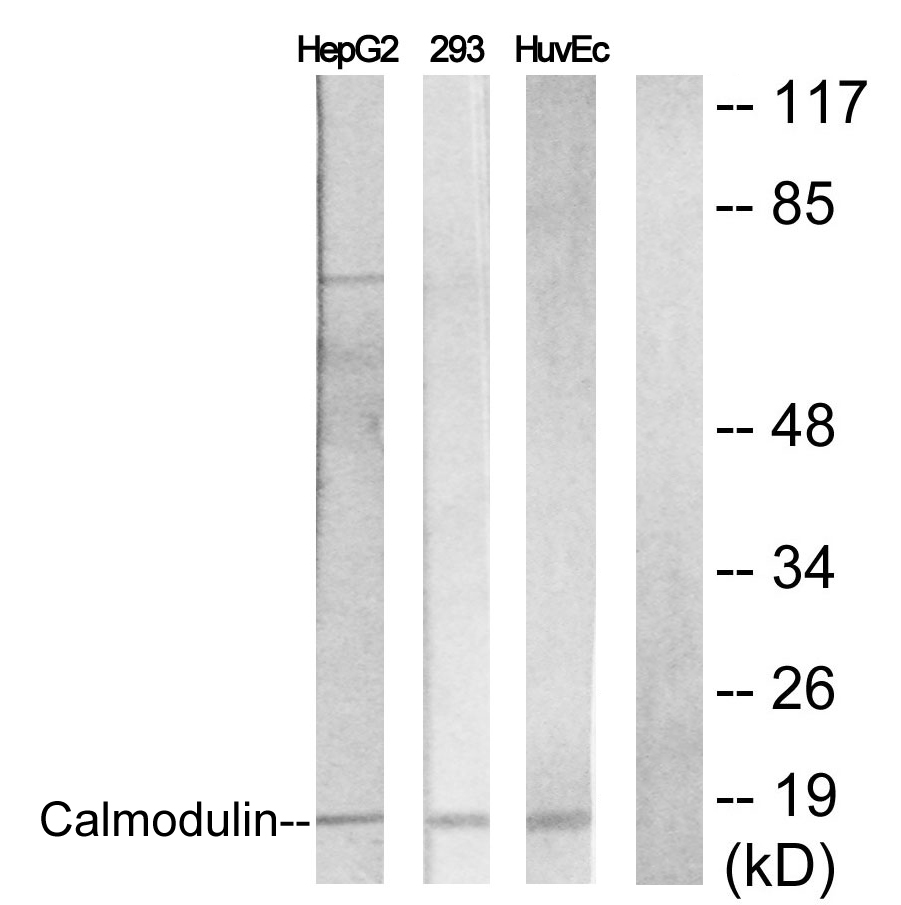Calmodulin antibody
GTX101767
ApplicationsImmunoFluorescence, Western Blot, ImmunoCytoChemistry
Product group Antibodies
TargetCALM1
Overview
- SupplierGeneTex
- Product NameCalmodulin antibody
- Delivery Days Customer9
- Application Supplier NoteWB: 1:500-1:3000. ICC/IF: 1:100-1:1000. *Optimal dilutions/concentrations should be determined by the researcher.Not tested in other applications.
- ApplicationsImmunoFluorescence, Western Blot, ImmunoCytoChemistry
- CertificationResearch Use Only
- ClonalityPolyclonal
- Concentration1 mg/ml
- ConjugateUnconjugated
- Gene ID801
- Target nameCALM1
- Target descriptioncalmodulin 1
- Target synonymsCALML2, CAM2, CAM3, CAMB, CAMC, CAMI, CAMIII, CPVT4, DD132, LQT14, PHKD, PHKD1, caM, calmodulin-1, Calmodulin-2, Calmodulin-3, calmodulin 1 (phosphorylase kinase, delta), phosphorylase kinase subunit delta, phosphorylase kinase subunit delta 1, phosphorylase kinase, delta subunit, prepro-calmodulin 1
- HostRabbit
- IsotypeIgG
- Protein IDP0DP23
- Protein NameCalmodulin-1
- Scientific DescriptionThis gene is a member of the calmodulin gene family. There are three distinct calmodulin genes dispersed throughout the genome that encode the identical protein, but differ at the nucleotide level. Calmodulin is a calcium binding protein that plays a role in signaling pathways, cell cycle progression and proliferation. Several infants with severe forms of long-QT syndrome (LQTS) who displayed life-threatening ventricular arrhythmias together with delayed neurodevelopment and epilepsy were found to have mutations in either this gene or another member of the calmodulin gene family (PMID:23388215). Mutations in this gene have also been identified in patients with less severe forms of LQTS (PMID:24917665), while mutations in another calmodulin gene family member have been associated with catecholaminergic polymorphic ventricular tachycardia (CPVT)(PMID:23040497), a rare disorder thought to be the cause of a significant fraction of sudden cardiac deaths in young individuals. Pseudogenes of this gene are found on chromosomes 10, 13, and 17. Alternative splicing results in multiple transcript variants encoding different isoforms. [provided by RefSeq, Mar 2015]
- Storage Instruction-20°C or -80°C,2°C to 8°C
- UNSPSC12352203
References
- Mule SN, Manchola NC, de Oliveira GS, et al. Proteome-wide modulation of S-nitrosylation in Trypanosoma cruzi trypomastigotes upon interaction with the host extracellular matrix. J Proteomics. 2021,231:104020. doi: 10.1016/j.jprot.2020.104020Read this paper




